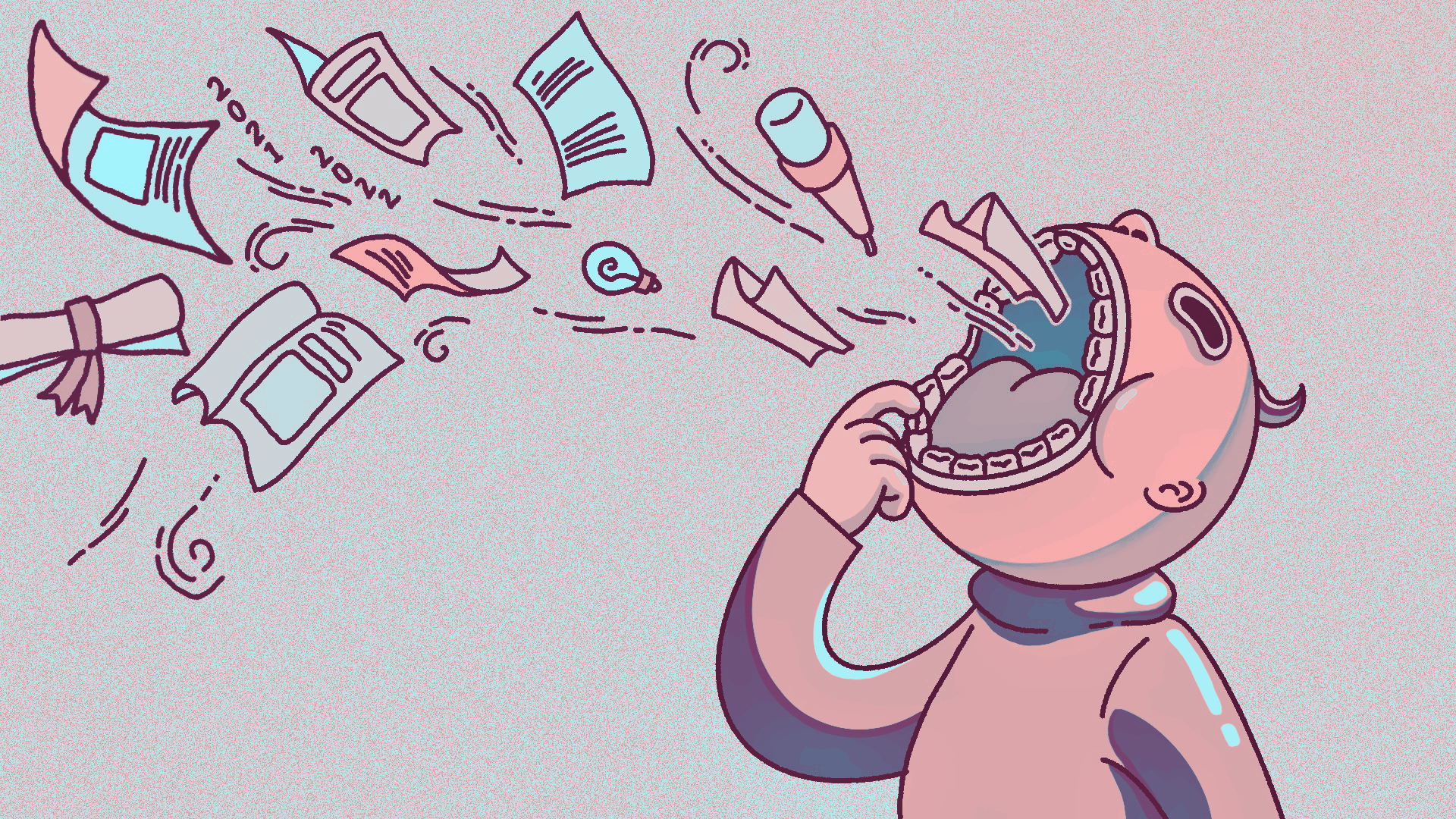
Bani Abidi (MFA 1999) is funny. Not “haha” funny, not slapstick funny, and not bump-set-punchline funny either. Abidi’s humor is that of an understanding sibling. It is the humor of small facial gestures: A raised eyebrow, a slanted smile of recognition, a sideways glance to see if anyone else caught that.
Abidi came of age in 1990s Pakistan, during a decade unwinding from an 11-year dictatorship. A democracy had been newly set up and people who had left to live abroad were filtering back into the country. There was a great aesthetic unraveling known as “Karachi Pop” that spilled into the streets and questioned the relationship between high art and popular craft. All the while, Abidi found herself wondering: Where do I fit into this?
In 1997 she enrolled in SAIC’s MFA Drawing and Painting program. Leaving her home continent was “game changing,” she says. She experienced a “stupendous internationality” in Chicago, and was introduced to the medium that she would base the rest of her artistic career on: video.

Abidi’s first video piece she made after graduating from SAIC is “Mangoes” (1999). It’s a single-shot discussion between two women, one Indian, one Pakistani, both played by Abidi. They sit side by side cutting and slurping mangoes. “The mangoes are so huge, not very good,” one woman says. The two proceed to talk politely with one another about how much better mangoes are in their respective home places. They compare their memories of eating mangoes as children, pitting their moments of nostalgia against one another.
The video quietly climaxes when the Indian woman asks the Pakistani: “How many types of mangoes do you get in Pakistan?”
“I think we have about five,” the Pakistani woman answers. “What about India?”
“I think we have about six in India,” she replies.
“Yeah, actually, I think Pakistan also has about six or seven,” the Pakistani woman retorts.
And the video fades to black.
There is a subtle humor about their fruit-filled conversation. A passive aggressiveness that creeps into the viewer’s face, a subtle, forced smile as the actors try to keep their cool.
Abidi made the video and then took some years away from making art. She didn’t relate to a lot of the artists being emulated and celebrated at the time, like Shirin Neshat, the Iranian artist known for her photo and video work exploring the cultural taboos of women in Iran. “[They] were working with a certain kind of essentialism,” she says. “I wasn’t interested in all that.” While others in her field turned their lens to grand gestures of culture, Abidi was more interested in the ordinary.
Instead of art, Abidi pursued education. “It’s really nice to completely give up on what you do at some point,” she says, completely straight-faced. After six years in the US, she suddenly had the urge to return to Pakistan. “It was incredible to come back … with these profound friendships and moments and learning,” she says. “I just started making exhibitions and videos, and it just flew. I wasn’t trying to sell anyone. It was a combination of feeling so inspired and finally being able to dissect and examine things from another lens.”

When Abidi considers her work now, she realizes that she has been creating through a feminist lens all along. “It’s about looking at men, and poking fun at them,” she says gleefully. “I realized that if you laugh at someone who intends to scream at you, that’s really disarming. It’s also a form of resilience.”
In “Reserved” (2006), Abidi created a storyline about a fictional VIP coming to visit Karachi. Rather than centering this mysterious VIP’s arrival, she went to the periphery. She wanted to film people in a state of waiting. She filmed a traffic jam caused by blocked roads, schoolchildren grasping their flags to wave at the VIP, and people mingling in the hall where the VIP would eventually arrive. The idea was based on a real-life International Monetary Fund meeting that was to happen in Karachi. But her video project is entirely choreographed.
“In an ideal life, I’d be a documentary filmmaker,” Abidi says. “But I’m too shy and impatient. A lot of my work is about things that I would like to have documented — I just go to great depths to create them.”
Once in a while, the city of Karachi notices her gestures, and gestures back. When she was creating the “traffic” scene for “Reserved,” she recalls that people in the street noticed she was filming and wanted to join in. They willingly created even more of a traffic jam, just to be part of the filmed traffic jam. “It’s just a different sense of time,” she says wistfully, intertwining the story, again, with a quiet humor and a deep, gentle understanding.
“I can only work in places where I have a very intuitive reading,” she says. “For me, that’s South Asia. I understand the gestures. I understand what masculinity is there. Where you understand nuance, you have a better chance at telling the story, and a better chance at universality.”
Today Abidi is living and working in Berlin, a city that she is quick to admit she doesn’t understand at all. If this outsidership bothers her she doesn’t let it show — she seems patient to let the city display itself to her. When asked what she has going on in the meantime, Abidi responds simply and effectively, with an answer that could very much describe her entire career: “Big and small things happening in different parts of the world.”
Bani Abidi’s current exhibition, “The Man Who Talked Until He Disappeared,” is on display at the MCA until June 5.
Parker Yamasaki (MANAJ 2023) is the managing editor at F Newsmagazine. She is looking for a sunnier place to sit.







